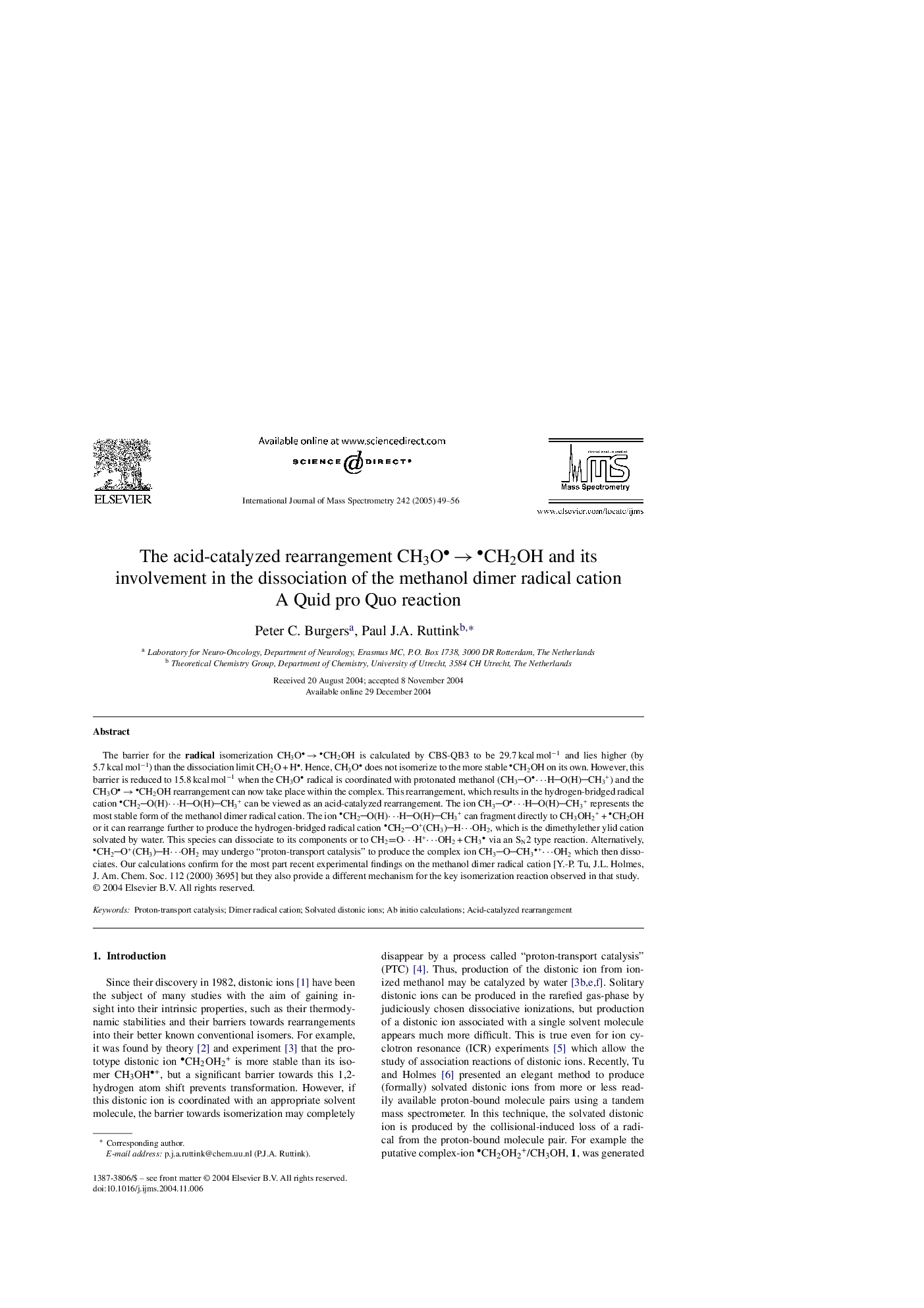| Article ID | Journal | Published Year | Pages | File Type |
|---|---|---|---|---|
| 9746738 | International Journal of Mass Spectrometry | 2005 | 8 Pages |
Abstract
The barrier for the radical isomerization CH3O â CH2OH is calculated by CBS-QB3 to be 29.7 kcal molâ1 and lies higher (by 5.7 kcal molâ1) than the dissociation limit CH2O + H. Hence, CH3O does not isomerize to the more stable CH2OH on its own. However, this barrier is reduced to 15.8 kcal molâ1 when the CH3O radical is coordinated with protonated methanol (CH3Oâ¯HO(H)CH3+) and the CH3O â CH2OH rearrangement can now take place within the complex. This rearrangement, which results in the hydrogen-bridged radical cation CH2O(H)â¯HO(H)CH3+ can be viewed as an acid-catalyzed rearrangement. The ion CH3Oâ¯HO(H)CH3+ represents the most stable form of the methanol dimer radical cation. The ion CH2O(H)â¯HO(H)CH3+ can fragment directly to CH3OH2+ + CH2OH or it can rearrange further to produce the hydrogen-bridged radical cation CH2O+(CH3)Hâ¯OH2, which is the dimethylether ylid cation solvated by water. This species can dissociate to its components or to CH2Oâ¯H+â¯OH2 + CH3 via an SN2 type reaction. Alternatively, CH2O+(CH3)Hâ¯OH2 may undergo “proton-transport catalysis” to produce the complex ion CH3OCH3+â¯OH2 which then dissociates. Our calculations confirm for the most part recent experimental findings on the methanol dimer radical cation [Y.-P. Tu, J.L. Holmes, J. Am. Chem. Soc. 112 (2000) 3695] but they also provide a different mechanism for the key isomerization reaction observed in that study.
Keywords
Related Topics
Physical Sciences and Engineering
Chemistry
Analytical Chemistry
Authors
Peter C. Burgers, Paul J.A. Ruttink,
